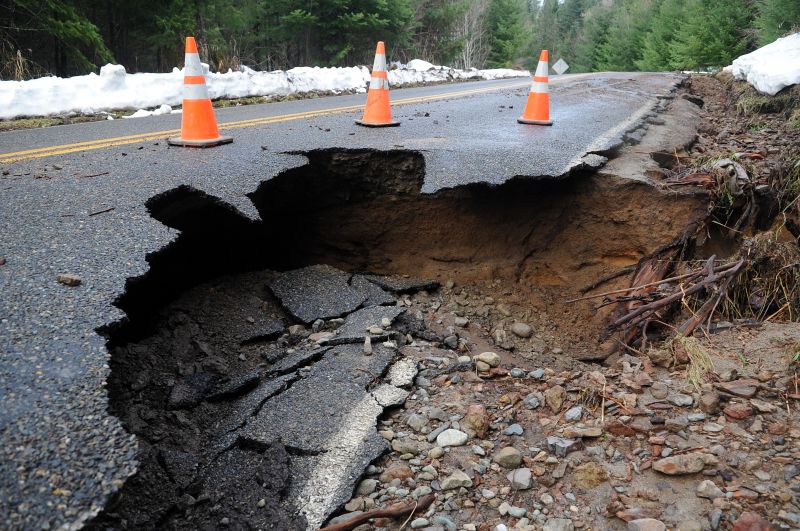Leading Sinkhole Repair Supplies To Fix Ground Collapse Issues
Learn about top-rated products that help you efficiently repair sinkholes and protect your property from further damage.
 Sinkhole repairs require specialized products designed to stabilize and fill compromised ground areas effectively. When dealing with a sinkhole, it is crucial to select materials that can withstand the shifting soil and prevent further erosion. Repair products often include a combination of quick-setting compounds, stabilizing agents, and reinforcement materials that work together to restore the integrity of the affected area. Proper application and choosing the right product type are essential for long-lasting results.
Sinkhole repairs require specialized products designed to stabilize and fill compromised ground areas effectively. When dealing with a sinkhole, it is crucial to select materials that can withstand the shifting soil and prevent further erosion. Repair products often include a combination of quick-setting compounds, stabilizing agents, and reinforcement materials that work together to restore the integrity of the affected area. Proper application and choosing the right product type are essential for long-lasting results.
Top Overall Option
Multi-Purpose Cementitious Repair Compound
This versatile, fast-setting repair compound is suitable for filling and stabilizing sinkholes and ground voids. It offers excellent adhesion to various substrates, including soil and concrete, and provides durable, long-lasting results when applied correctly. Its ease of use and quick curing time make it a popular choice for both professional and DIY repairs.
Types of Products For Sinkhole Repairs
Cement-Based Repair Mixes
Pre-mixed or powder forms that set rapidly to fill voids and stabilize soil.
Expanding Foam Fillers
Lightweight, expandable foams that conform to irregular spaces and provide quick stabilization.
Geotextile Reinforcement Fabrics
Synthetic fabrics used to reinforce soil and prevent future erosion in sinkhole areas.
Soil Stabilizers and Additives
Chemical agents that improve soil cohesion and strength before filling.
Polyurethane Sealants
Flexible sealants used to seal cracks and prevent water infiltration that can cause sinkholes.
Hydraulic Cement
Specialized cement that expands as it sets, ideal for sealing active leaks or water ingress.
Grout and Mortar Mixes
Fluid mixes used to fill larger voids and reinforce surrounding soil structure.
Drainage and Moisture Control Products
Materials designed to improve drainage and reduce water accumulation that can lead to sinkholes.
Ground Stabilization Grouts
High-strength grouts used to fill and stabilize deep or extensive sinkhole areas.
Epoxy Resins
Adhesive resins used to bond soil particles and reinforce weak ground sections.
Popular Choices
Quick-curing cement blends suitable for immediate stabilization needs.
User-friendly foam kits that expand to fill voids and support ground structure.
Flexible fabrics to reinforce soil and prevent future erosion in sinkhole-prone areas.
Specialized cement for sealing active water leaks and preventing further ground collapse.
Versatile sealants for cracks and small voids, easy to apply with standard caulking tools.
Chemical solutions that enhance soil cohesion and durability.
Complete kits for patching and reinforcing damaged ground surfaces.
Products designed to divert water flow and reduce saturation in vulnerable areas.
Heavy-duty grouts for filling large or deep voids with long-term stability.
Resins used to bond soil particles and strengthen weak ground zones.
Repairing a sinkhole involves assessing the size and depth of the void, which guides the selection of appropriate materials. Common solutions include cement-based mixes that set rapidly, geotextile fabrics for reinforcement, and expanding foams that fill irregular spaces. These products are designed to be durable and adaptable to various soil conditions, ensuring that the ground remains stable over time. It is important to follow manufacturer instructions carefully to achieve optimal results.
In addition to the primary repair materials, ancillary tools such as shovels, mixers, and protective gear are often necessary to facilitate the repair process. Proper site preparation, including clearing debris and ensuring proper drainage, can significantly improve the effectiveness of the repair. Consulting with a geotechnical expert may be advisable for larger or more complex sinkhole issues, but for minor repairs, selecting the right products can often suffice.
Overall, investing in quality repair products and understanding their applications can make the difference between a temporary fix and a permanent solution. Whether dealing with small surface depressions or more extensive ground collapses, the right combination of materials and techniques can help restore stability and safety to the affected area.
Key Buying Considerations
- Assess the size and depth of the sinkhole to determine appropriate product volume and type.
- Identify soil type and moisture levels to select compatible repair materials.
- Consider whether the repair needs to be water-resistant or waterproof.
- Evaluate the setting time and curing process to match project timelines.
- Check for compatibility with existing ground materials such as soil or concrete.
- Determine if reinforcement fabrics or additional stabilization measures are necessary.
- Review manufacturer instructions for application techniques and safety precautions.
- Consider the environmental conditions, including drainage and water flow, that may affect repair effectiveness.
- Select products with proven adhesion and bonding properties suitable for soil repair.
- Plan for proper site preparation, including clearing debris and ensuring proper drainage.
- Choose repair materials that can accommodate future ground movement if necessary.
- Evaluate the ease of application, especially for DIY projects or limited access sites.
- Consider the longevity and durability of the repair solution for long-term stability.
- Review product compatibility with any existing infrastructure or underground utilities.
